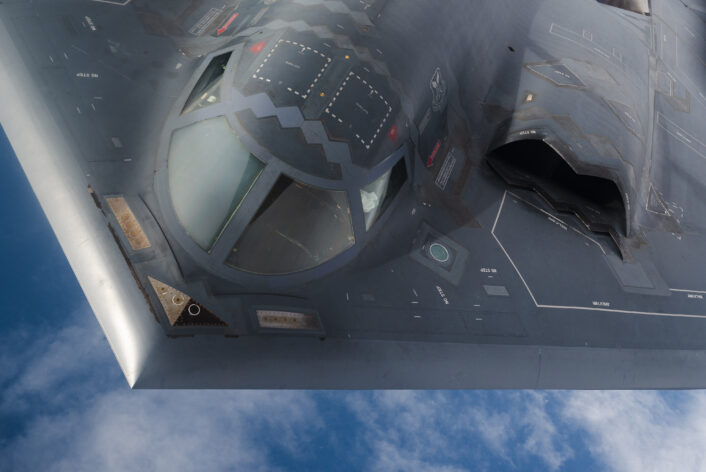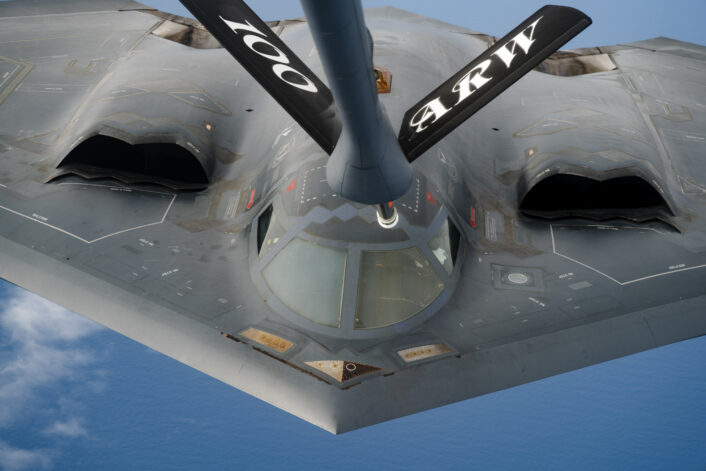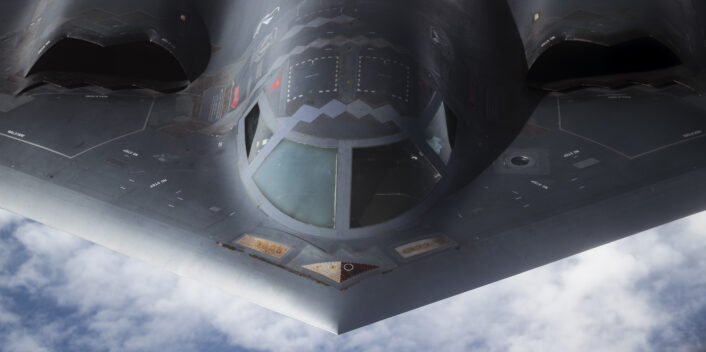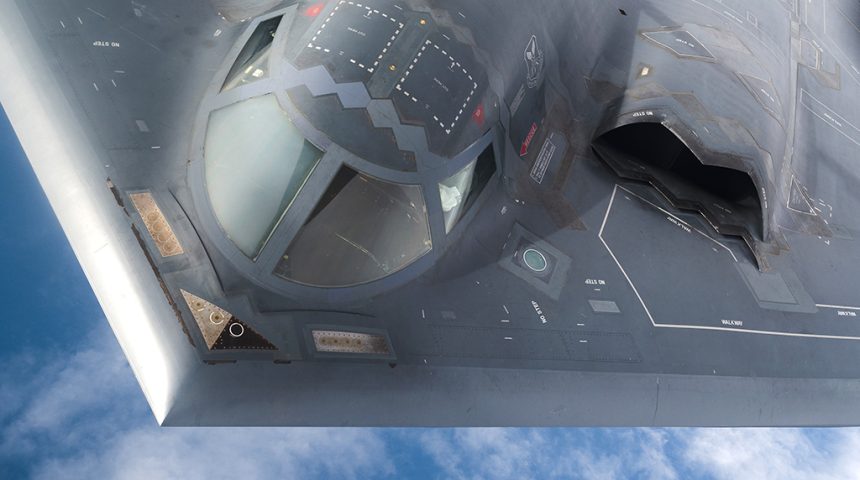The U.S. Air Force has just published some new close up shots of the B-2 during aerial refueling that show some of the bomber’s characteristic nose sensors.
More than 30 years after it made is first public appearance, the Northrop Grumman B-2A Spirit is still an impressive sight. No matter how many times you have seen it: with its alien spacecraft look, the large flying-wing and its peculiar system still attract the interest of aviation enthusiasts and analysts all around the world.
We have often talked about some of the Spirit’s coolest features, including the unique exhaust and the “beaver tail” of the GLAS (Gust Load Alleviation System), or the rotating in-flight refueling system’s receptacle. In September 2019 we also commented some nice shots of a B-2 refueling from a KC-135 that provided a clear look at the Pitot and Static ports, used for dynamic and static pressure measurement, in the nose section of the stealth bomber.
As explained in that post, every aircraft, even the smallest ones, require pitot probes and static ports to determine the plane’s airspeed, altitude and vertical speed. But, unlike most of the other airplanes, the B-2 carries no external/protruting pitot tubes (that would affect the aircraft’s Radar Cross Section – RCS – making it less stealthy) and for this reason, to check, for instance, the airspeed, the aircraft uses static ports set flush into the skin, in the nose, in front of the cockpit.
A new set of photographs has just been released by the U.S. Air Force. It features a U.S. Air Force B-2 Spirit assigned to the 509th Bomb Wing, deployed to Iceland for a Bomber Task Force mission, during refueling operations from a KC-135 with the 100th Air Refueling Wing from RAF Mildenhall, UK, over the Atlantic Ocean, on Sept. 6, 2021.
Check out this B-2 Bomber as it gets refueled by a KC-135 Stratotanker over the #Atlantic Ocean … https://t.co/xx5UQirhEX #AirForce pic.twitter.com/X9JVJyN7x9
— DVIDSHub (@DVIDSHub) September 10, 2021
Like most of the photographs taken during the AAR (Air-to-Air Refueling) operations of the B-2, along with the air data ports embedded in the aircraft’s Hawk Beak, the images show, on the Spirit’s left wing, a circular window that covers the aircraft’s astro-tracking system, that allows the aircraft to navigate in case GPS is denied.

Celestial tracking or astronavigation was the method used to calculate the position of the aircraft based on the position of a particular star or the sun before the advent of GPS. The basic approach is to sight on the sun or a particular star and calculate the position of the aircraft (missile or ship) from the sighting angles to the star. The calculation is based upon highly accurate data about the positioning of the sun and certain reference stars at various time and locations.

While astronavigation has been widely replaced by the GPS, astro-trackers are still in use with some aircraft including the B-2, that is believed to operate a modified NAS-26 astro-inertial navigation system. For modern applications, the star tracking location is used to calibrate and update an inertial navigation system and, as said, might be useful for autonomous navigations in case GPS is made unavailable.










